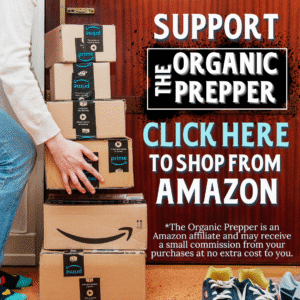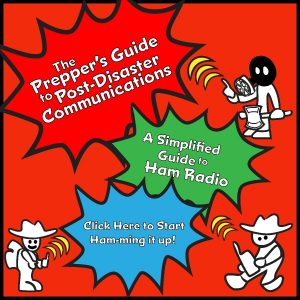If you're new here, you may want to subscribe to my RSS feed. Thanks for visiting!
Author of How to Prep When You’re Broke
and Bloom Where You’re Planted online course
A saying that became popular during World War II was, “Use it up, wear it out, make it do, or do without.” This could be a frugal-living battle cry to help us all get the most out of what we have without a trip to the store.
I thought this might be a great foundation for a series, so I’m starting today with “Use it up.” But I’d love for this to be collaborative, so please share your best use-it-up ideas in the comments.
Ways to use it up
Frugal people know that using something right down to the very last drop is a great way to save money. The way I see it, if I’m able to get more uses out of something that others would consider empty and just throw away, it’s like getting that item for free. In fact, I always made it a game when my girls were younger to see how many more uses we could get out of something.
I’ve broken this into three categories: food, cleaning supplies, and health and beauty aids. These are things that are finite in amount – we’ll be talking about wearing things out in the next installment.
Food
The further you can stretch your food these days, the better off you are. As inflation strikes hard at the grocery store, some of these ideas may help you “use it up” when other people would just toss it out. Some of these ideas may not be for everyone, so just pick and choose the things that work for you.
Leftovers: I’ve written this article about ways to use up leftovers but there are a couple of things I want to add. When we were at our lowest point financially, I went so far as to scrape the last bites of food on everyone’s plate into my leftover soup container in the freezer. Using up your leftovers is one of the best ways to save money on your grocery bill. I couldn’t believe it when I heard that my friend’s new boyfriend “didn’t eat leftovers.” He’d grown up in a wealthy family, and leftovers were either given to the housekeeper or thrown out. She had to make them extra delicious to get him on board, but he no longer balks at the idea.
Just add water: This is a trick that applies to so many things. Did you open a can of tomato sauce and you want to get every last drop? Add some water and whisk it to get every single bit of tomato-y goodness. Has the ketchup or salad dressing bottle given its last squirt? Add some water, shake it up, and use it to season a dish that you’re cooking. For example, it could go into soup, taco meat, or mashed potatoes, depending on the flavor you’re going for in that particular dish.
Add a starch: If you have only one serving left of some meaty dish, make a sauce or dice it up and mix it with a starch to make it stretch to feed the family. Use the meat as a condiment instead of a main dish in this meal and add it to the less expensive ingredients of rice, potatoes, or pasta. Here are some more ideas for stretching food.
Cleaning Supplies
Cleaning supplies aren’t cheap, particularly if you buy brand names. This is why we recommend making your cleaning supplies and laundry soap when you can. But if you have store-bought, here are some ways to make it go further.
Use a spray bottle. People tend to overuse liquids that you just dump into your bucket or sink. I prefer to put these in a spray bottle and find that things get just as clean with far less of the product. For example, when mopping, my bucket contains only water. I put my floor cleaner in a spray bottle (make sure to get the concentration right for your surface), spritz the area, then mop it.
Change the ratio of concentrates. A lot of products are concentrates that are meant to be added to water in the first place. However, many people don’t realize this and use the product straight from the container. That is wasteful and can be damaging to your surfaces. I like to experiment with concentrates and figure out how little of the product I can use in my mixture and still get the results that I want.
Read the instructions. You know those cups doubling as lids that come with liquid laundry detergent? Most folks just fill them right up, but if you read the instructions, you generally only need a couple of tablespoons per load for a standard washer and 2 teaspoons for a high-efficiency machine. (There are other variables too – you can read about it here.) You may discover you’ve been using about 10 times the amount of laundry soap you actually need.
Just add water. This is the best tip – it applies to just about anything you want to get the most out of before throwing it out. As soon as I get dishwashing soap, I decant it into my own container and mix it half and half with water from the start. When I near the end of any cleaning product, I can always get at least one more use – and often more, by filling it halfway with water, closing the lid, and shaking it well. Then just add elbow grease.
Hygiene and Beauty Products
Getting the most out of cosmetics and personal hygiene products can be tricky. You don’t want to risk doing anything that could potentially cause illness or infection. So take care with these suggestions.
Use a pouf. You use far less body wash if you use one of those little plastic pouf body scrubbers. Now, if you’re not careful, these can be a haven for all sorts of nasty bacteria. (Here’s a really gross study from the Journal of Microbiology if you really want to know.) I haven’t had any issues. I put mine in the dishwasher each day and hang it where it can dry thoroughly.
Mix your foundation with moisturizer. If you aren’t looking for heavy coverage, you can mix your products and extend them a little further. Mix foundation and moisturizer in the palm of your hand then dot it onto your face with a makeup brush.
Reconstitute dried-out mascara or liquid eyeliner. This is a tip from my cosmetologist daughter. Add just a little bit of sterile saline solution – the kind that contact lens wearers use. It must be sterile to be safe.
Reconstitute nail polish. Is your nail polish thick, gooey, and unusable? Don’t throw it away! Add a few drops of nail polish remover and stir well to make it good as new.
Mix your favorite essential oil with unscented products. Instead of buying expensive, good-smelling products, go with plain unscented ones and add in a few drops of your favorite scent. It can be far less costly.
Use tube squeezers. There may be a better, fancier name for these little devices but whatever you call them, they’re worth their weight in gold. Tube squeezers can be used on anything that comes in a tube – toothpaste, moisturizer, balm, triple antibiotic cream, face wash…the list goes on and on.
Then cut the end off. After you have squeeeeeezzzzeedddd every drop of toothpaste et. al. out of the tube, cut the end off. Surprise – you’ll probably find at least a couple more uses in there.
Use less shampoo and conditioner. You’re probably using far more shampoo and conditioner than you actually need. Try reducing the amount of shampoo until you notice a difference in the cleanliness of your hair. Some people swear by the “no poo” method and don’t use shampoo at all. Instead, they use small amounts of other natural products. To use less conditioner, I’ve learned if I use a wide-tooth comb and comb the conditioner through my hair (and I have a LOT of wild wavy hair), I use far less.
Shower and wash your hair less often. No, I’m not suggesting you totally forego personal hygiene. But you may not need to shower and wash your hair every single day unless you are actually getting dirty and working up a sweat. If you actually skip a day here and there, your skin and hair may both thank you.
And of course…
Just add water. Are you nearing the end of the bottle of shampoo or body wash? You know the drill. Add water, shake it up, and get a few more washes out of it.
How do YOU use it up?
These are just a few ways to get the most out of products we use up and replace. Do you have some ideas to add? I know my fellow frugal folks are going to give me ideas I never even imagined. Tell me in the comments. I’m already loving this series!
















2 Responses
When I find my veggies starting to get to the end of their best I put them in the dehydrator. I get less but more concentrated veggies and sometimes can make veggie “powders” out of them when I have enough stored
I really Love Frugal Fridays. Thanks. My neighbor and I often swap leftovers. She makes fantastic Indian food but gets tired of eating it and she likes my crockpot concoctions. This works really well for us.